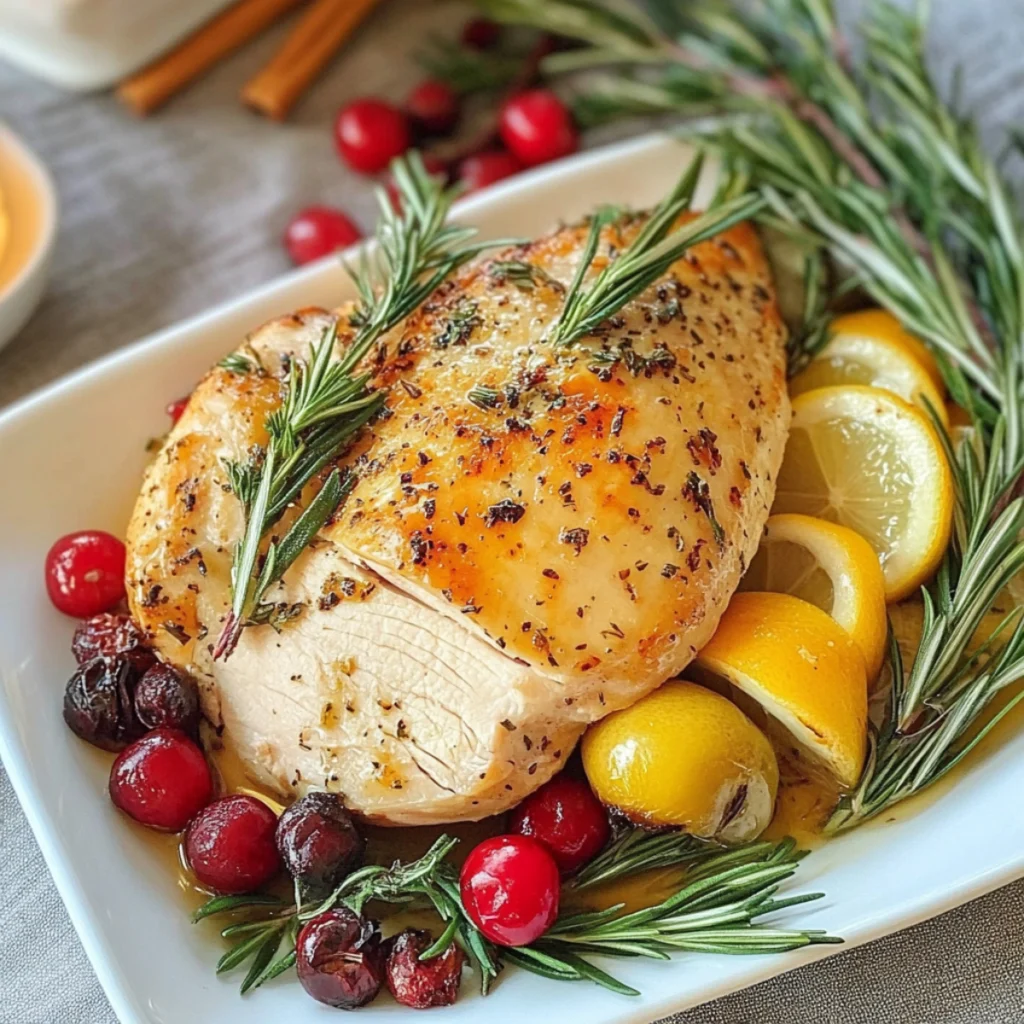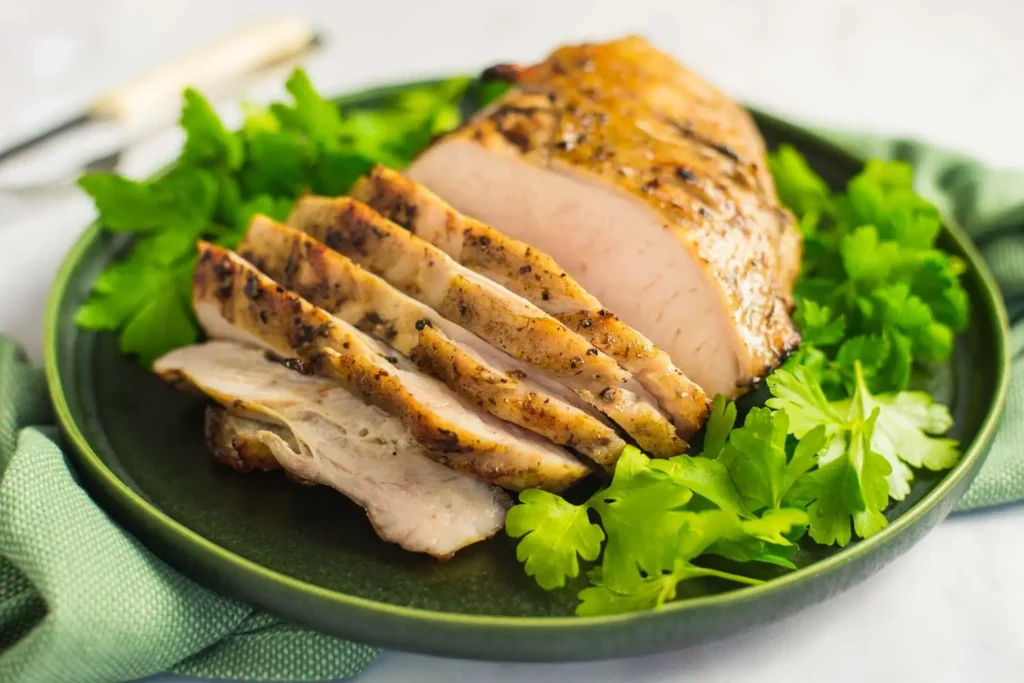Grilling a turkey is a delightful way to celebrate holidays or elevate your everyday cooking game. But one question often baffles even seasoned grillers: Do you grill a turkey breast side up or down? Each method has its advocates and unique results, making it vital to understand the pros and cons of each. From ensuring a crispy, golden-brown skin to maintaining juicy, tender meat, the choice of grilling position can make all the difference.
Table of contents
Understanding the Basics of Grilling Turkey
What Does “Breast Side Up” and “Breast Side Down” Mean?
When grilling a turkey, the term breast side up refers to positioning the bird with its breast—the white meat—facing upwards, away from the grill’s heat source. Conversely, breast side down places the turkey breast directly on the grill or closer to the heat. These positions influence how the heat interacts with the meat, skin, and juices, affecting the final texture and flavor.

For more insights on grilling turkey to perfection, check out How Long Does It Take to Grill Turkey Breast?.
The Science of Grilling Turkey: Heat Distribution and Meat Juiciness
The secret to a perfectly grilled turkey lies in even heat distribution. When the breast is up, it allows the dark meat, which cooks slower, to be exposed to more heat. Meanwhile, grilling breast side down helps the breast meat retain moisture by letting natural juices flow into it. Both methods require vigilance, as improper heat management can result in dry meat or uneven cooking.
Common Mistakes When Grilling Turkey
Even the most experienced grillers can slip up. One frequent error is failing to monitor grill temperature, which can cause the meat to overcook. Another is not using a meat thermometer—a tool essential for checking doneness. Finally, many grillers forget to rest the turkey before carving, leading to juice loss and less flavorful results.
How to Grill Turkey Breast Like a Pro: A Complete Guide
Grilling Turkey Breast Side Up: Benefits and Challenges
Why Grilling Breast Side Up is Popular
Many people prefer grilling their turkey breast side up because it allows the white meat to receive direct heat, leading to more even cooking. When the breast faces upward, it’s easier to achieve a golden-brown, crispy skin, which is a visual and culinary treat. Plus, the juices flow downward, basting the bird naturally. If you’re wondering, Do you grill a turkey breast side up or down?—this method is a crowd favorite for its simplicity.

How It Ensures Even Cooking of White Meat
One of the biggest advantages of grilling breast side up is that the white meat, which cooks faster than dark meat, is positioned ideally for uniform heat exposure. This prevents the breast meat from becoming overcooked while waiting for the thighs and legs to reach the correct temperature. Using a meat thermometer is key here to track the internal temperature and avoid dryness.
Skin Browning and Flavor Development with Breast Side Up
Grilling a turkey breast side up ensures the breast skin gets direct heat, helping it brown beautifully. The exposed skin renders fat as it cooks, creating a flavorful, crispy crust. This caramelized layer adds texture and depth to every bite, making it a top reason many choose this position when grilling.
Challenges of Grilling Breast Side Up: Risks of Dryness
While this method has its perks, it’s not without drawbacks. Since the breast is exposed to direct heat for longer, it risks drying out if not basted frequently. To mitigate this, grillers often baste with melted butter, stock, or a marinade every 30 minutes. Still, you’ll need to watch the grill temperature closely and keep the bird from overcooking.
Grilling Turkey Breast Side Down: Advantages and Drawbacks
How Breast Side Down Keeps Meat Juicier
Grilling breast side down allows gravity to work in your favor. The juices from the turkey’s darker parts flow into the breast, keeping it moist and tender. If you’ve ever asked, Do you grill a turkey breast side up or down?—this method appeals to those who prioritize juicy white meat.
Better Heat Distribution for Thighs and Dark Meat
By positioning the turkey breast side down, the legs and thighs are closer to the heat source, which helps them cook faster. Dark meat naturally takes longer to cook than white meat, so this arrangement balances the cooking times, resulting in an evenly cooked turkey.
Potential Challenges: Prolonged Cooking Time and Skin Texture
However, grilling breast side down comes with trade-offs. Because the breast is shielded from direct heat, it may take longer to cook through. Additionally, the breast skin won’t crisp up as nicely since it’s pressed against the grill or rack. This might be a dealbreaker for those who love crunchy, golden skin.
Step-by-Step Guide to Grilling Turkey Breast Side Up
Preparation: Cleaning, Seasoning, and Setting Up the Grill
Before grilling your turkey breast side up, start by preparing the bird thoroughly. Remove the giblets and pat the turkey dry with paper towels. Season generously with salt, pepper, and herbs, or try a flavorful dry rub. Let the turkey sit for at least 30 minutes to allow the seasonings to penetrate the meat.
Preheat the grill to medium-high heat, aiming for a steady temperature of around 350°F. If using a charcoal grill, arrange the coals on one side to create an indirect heat zone. For gas grills, turn off the burners directly below the turkey and keep the side burners on.
Using a Meat Thermometer for Accurate Cooking
To ensure perfectly cooked meat, use a meat thermometer. Insert it into the thickest part of the breast without touching the bone. This will help you monitor the internal temperature, which should reach 165°F for safe consumption.
Basting Tips for Maintaining Moisture
Basting is key to preventing the breast from drying out. Prepare a basting liquid like melted butter, broth, or a marinade, and brush it over the turkey every 30 minutes. This will lock in moisture and add a layer of flavor to the skin.
Step-by-Step Guide to Grilling Turkey Breast Side Down
Prepping the Turkey for Breast-Down Grilling
When grilling breast side down, the preparation steps are nearly identical. Clean and season the turkey as described earlier. However, position the bird with its breast facing the grill for this method.
Place the turkey directly on the grill grate or use a roasting rack if you want to avoid direct contact. Ensure you’ve preheated the grill to around 350°F.
Maintaining the Correct Grill Temperature
Keeping the grill at a consistent temperature is critical for success. If the grill gets too hot, the skin may burn, and the meat may dry out. Regularly check the temperature and adjust vents or burners as needed to maintain even heat.
Techniques for Flipping the Turkey Mid-Cooking
Some grillers prefer flipping the turkey halfway through the cooking process for balanced heat exposure. If you choose to flip, use sturdy tongs and a spatula to avoid tearing the skin. Be cautious, as the turkey will be hot and heavy.
For additional turkey grilling inspiration, visit Zenarecipes to learn more about timing and techniques for turkey grilling.
Comparing Results: Which Method is Better?
Texture and Flavor of Meat
When deciding, Do you grill a turkey breast side up or down?, the outcome largely depends on your priorities. Grilling breast side up produces a crisp, golden skin on the breast, which many find visually appealing and flavorful. However, some grillers argue that breast side down keeps the white meat juicier, as the juices flow into the breast rather than away from it.
Ease of Cooking and Monitoring
For beginners, grilling breast side up is often simpler. It’s easier to monitor the breast meat’s temperature, which reduces the risk of overcooking. Plus, basting the turkey is more convenient when the breast is exposed. On the other hand, grilling breast side down requires flipping the bird or carefully balancing heat zones to avoid overcooking.
Best Method for Special Occasions or Preferences
Ultimately, the best method depends on your goals. If you want a show-stopping presentation with crispy skin, go for breast side up. But if juiciness and flavor depth are your top concerns, breast side down may be worth the extra effort.
Expert Tips for Perfect Grilled Turkey
Using Indirect Heat for Better Cooking
One foolproof way to ensure a perfectly grilled turkey—regardless of the position—is to use indirect heat. This technique minimizes the risk of burnt skin while allowing the turkey to cook evenly. Place the coals or burners on the sides of the grill and set the turkey in the middle for a balanced heat source.
Adding Flavors Through Brines and Rubs
Enhance your turkey’s taste by using brines or dry rubs. Brining, which involves soaking the bird in a saltwater solution, locks in moisture and boosts flavor. Dry rubs, made of spices and herbs, add a robust crust. Both methods complement any grilling style, whether breast side up or down.
Choosing the Right Grill and Tools
Investing in a quality grill thermometer and sturdy tongs can make all the difference. Maintaining a consistent grill temperature and safely flipping the bird are crucial for success, especially when experimenting with different grilling positions.
Frequently Asked Questions
Should I Always Grill a Turkey Breast Side Up?
Not necessarily! While grilling breast side up is easier and results in crispy skin, it may not be the best choice if you prioritize juiciness. By grilling breast side down, the juices flow into the white meat, making it more tender. Ask yourself, Do you grill a turkey breast side up or down?—the answer depends on your preference for crisp skin or moist meat.
Can I Alternate Between Breast Up and Down?
Absolutely. Many grillers use a combination of both methods. Starting breast side down can help lock in moisture, while flipping it halfway ensures crispy skin. Just be careful when flipping, as the turkey may be heavy and hot.
How Do I Ensure My Turkey Stays Moist?
Regardless of the method, frequent basting and maintaining a steady grill temperature are crucial. Using a brine before grilling can also help retain moisture and add flavor. For best results, monitor the internal temperature to prevent overcooking.

